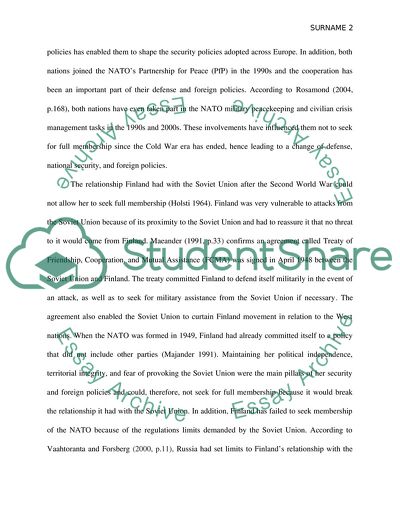Cite this document
(Why Finland and Sweden Have Not Sought Full Membership of NATO Essay Example | Topics and Well Written Essays - 3000 words, n.d.)
Why Finland and Sweden Have Not Sought Full Membership of NATO Essay Example | Topics and Well Written Essays - 3000 words. https://studentshare.org/politics/1825802-why-have-finland-and-sweden-not-sought-full-membership-of-the-north-atlantic-treaty-organization-nato
Why Finland and Sweden Have Not Sought Full Membership of NATO Essay Example | Topics and Well Written Essays - 3000 words. https://studentshare.org/politics/1825802-why-have-finland-and-sweden-not-sought-full-membership-of-the-north-atlantic-treaty-organization-nato
(Why Finland and Sweden Have Not Sought Full Membership of NATO Essay Example | Topics and Well Written Essays - 3000 Words)
Why Finland and Sweden Have Not Sought Full Membership of NATO Essay Example | Topics and Well Written Essays - 3000 Words. https://studentshare.org/politics/1825802-why-have-finland-and-sweden-not-sought-full-membership-of-the-north-atlantic-treaty-organization-nato.
Why Finland and Sweden Have Not Sought Full Membership of NATO Essay Example | Topics and Well Written Essays - 3000 Words. https://studentshare.org/politics/1825802-why-have-finland-and-sweden-not-sought-full-membership-of-the-north-atlantic-treaty-organization-nato.
“Why Finland and Sweden Have Not Sought Full Membership of NATO Essay Example | Topics and Well Written Essays - 3000 Words”. https://studentshare.org/politics/1825802-why-have-finland-and-sweden-not-sought-full-membership-of-the-north-atlantic-treaty-organization-nato.


